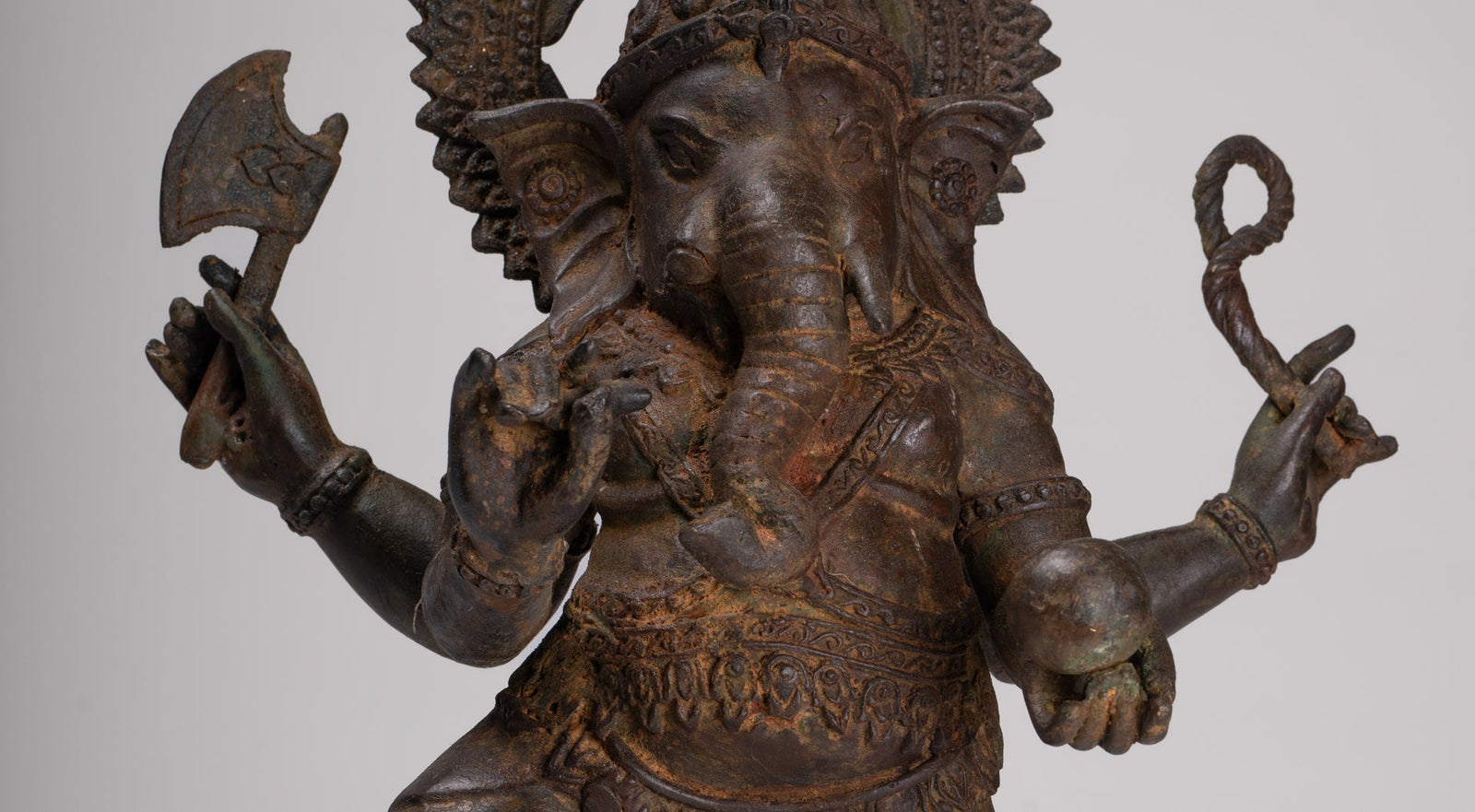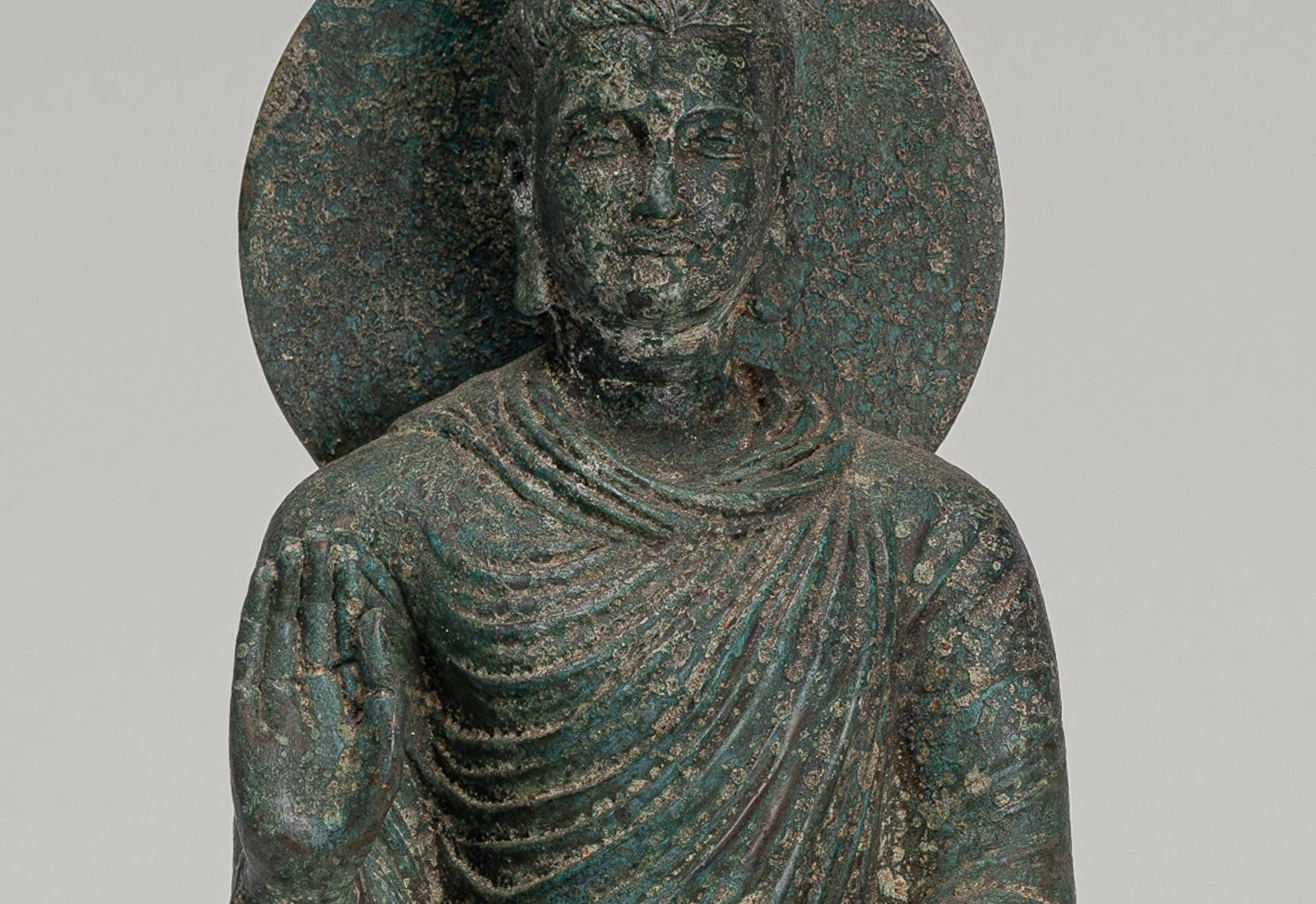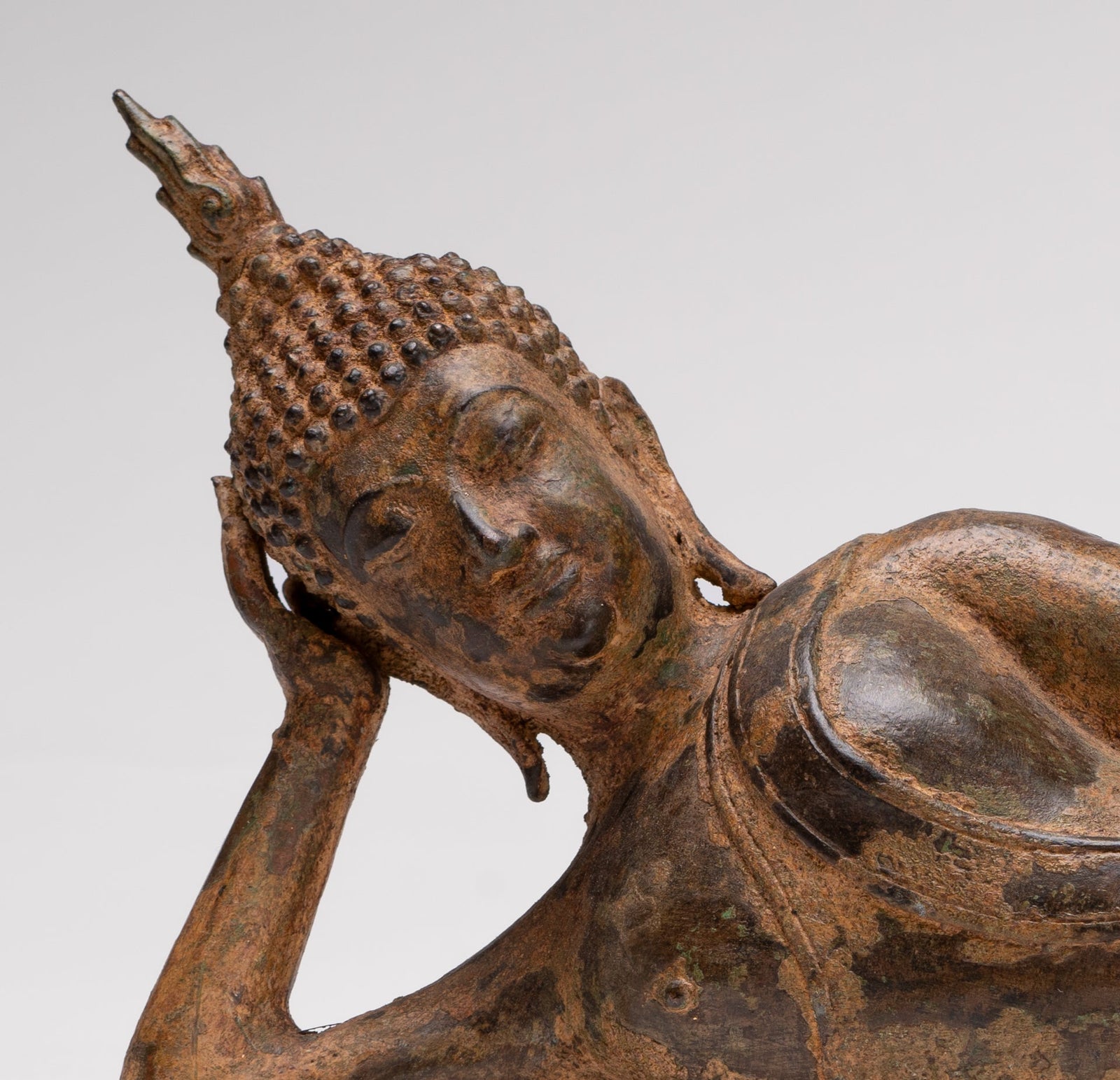-
Votive Panel - Antique Khmer Style Bronze Naga Buddha Votive Panel - 14.5cm/6"
Measures (Height) 14.5cm/6"
A beautiful antique Khmer style votive panel, depicting an antique 12th century post-Angkor Bayon style bronze triptych of the meditation Buddha, Vishnu and Lakshmi.
Here Buddha is seated on a three-tired throne, with the flaring head of a giant Naga, the serpent King Muchalinda, rising behind protectively behind. His hands are in the Dhyana mudra, the gesture of Meditation.
Buddha is flanked by Vishnu and Lakshmi. A not unusual representation of three deities that were significant in Khmer culture during the Bayon period. Here both Vishnu and Lakshmi are stood sambhanga on a simple pedestal.
Above this triptych can seen a seated Enlightenment Buddha, standing Buddha and Hevajra - one of the main yidams (a fully enlightened being) in Tantric or Vajrayana Buddhism.
Votive panels in Buddhism hold deep spiritual and cultural significance, serving as expressions of devotion, gratitude, and the aspiration for enlightenment. These panels, often found in temples, monasteries, caves, and shrines, are created as offerings by devotees or patrons and feature intricate depictions of the Buddha, bodhisattvas, or scenes from Buddhist teachings.
They play an essential role in Buddhist ritual practice and art, embodying the intersection of devotion and artistic expression while reflecting key aspects of Buddhist beliefs about merit-making, karma, and spiritual progress.
Votive panels or plaques, such as this, were produced as holy souvenirs for pilgrims as mementos or to be deposited by devotees at sacred shrines or caves.
One of the primary purposes of votive panels in Buddhism is merit-making, the practice of performing good deeds to accumulate positive karma, which is believed to lead to better rebirths and eventual liberation from the cycle of samsara (the cycle of birth, death, and rebirth). In Buddhist thought, acts of devotion, including the creation and offering of votive panels, are seen as ways to purify the mind, cultivate virtue, and generate spiritual merit.
Khmer style plaques have been found in temples across Southeast Asia, either made in the Khmer style or brought there by pilgrims as offerings.
Votive panels in Buddhism are more than just artistic representations of religious figures or symbols—they are tangible expressions of faith, devotion, and the desire for spiritual progress. By creating and offering votive panels, devotees participate in the practice of merit-making, seek protection and blessings, and commemorate significant moments in their spiritual journeys.
Throughout history, votive panels have served as bridges between the physical and spiritual worlds, embodying the Buddhist ideals of compassion, wisdom, and enlightenment.
Whether found in ancient cave temples, modern shrines, or personal altars, votive panels continue to play a vital role in the devotional life of Buddhists, offering a timeless reminder of the power of faith, art, and spiritual aspiration.
SATISFACTION GUARANTEE - We have been offering SE Asian Art for many years and are proud of the reputation we have developed for fair and honest listings. However, if for any reason, whatsoever, you are unhappy with your purchase please just let us know and we will provide a full refund. We want you to be 100% happy with your purchase.
-
The majority of orders will be shipped with DHL. This is a secure, express and fully tracked service.
Items less than 2Kg we typically ship using Royal Mail.
Once we receive your order we try to ship all orders the same or next working day.
Large and/or fragile pieces requiring palletising, specialist crating and/or extra packaging may take a little longer. Palletised shipments will be delivered curbside.
All orders over 35 GBP will be shipped free of charge.

-
We genuinely hope that all purchases delight.
However, if they do not, regardless of reason, we will refund all orders upon receipt of the unwanted item. Just notify us within 14 days of receiving your order that you wish to make a return and send the piece back to us with 30 days of delivery.
Let Us Help You Find The Piece You Desire
What Our Customers Think
He arrived and I am very happy about him in this chaotic times.
Karin, Stuttgart, Germany
I just wanted to tell you that I received the statue in good order. Thank you very much for your assistance getting it here so quickly. It's a beautiful piece! I'm very happy with it.
Edgardo, San Francisco, CA, USA
The shipping arrived. All good. Beautiful piece. Thanks a lot for the fast job. All the best and take care.
Dietmar, Munich, Germany














